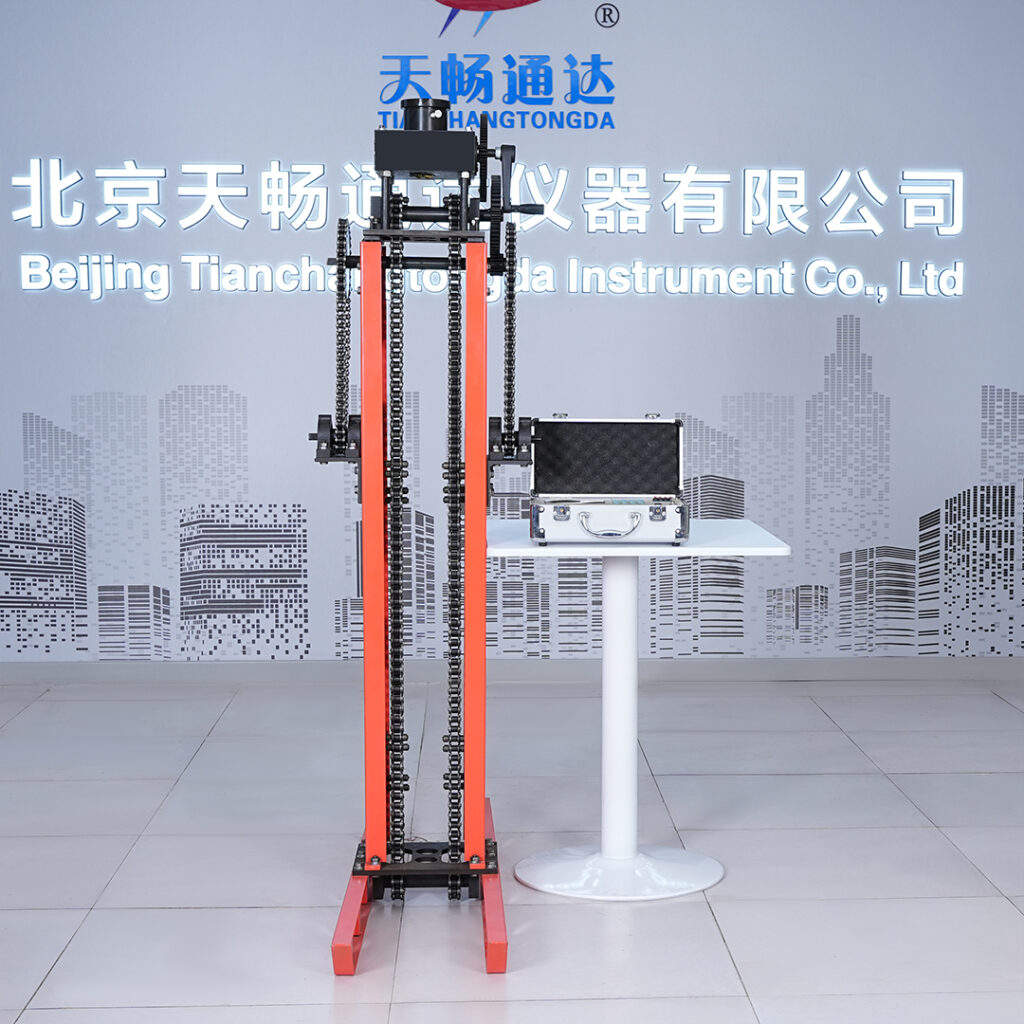When it comes to in-situ soil testing, two popular tools dominate the field: the Static Cone Penetrometer (SCPT) and the Dynamic Cone Penetrometer (DCPT). While both are used to assess soil strength, structure, and load-bearing capacity, they differ significantly in operation, application, and accuracy.
If you’re planning a geotechnical investigation, construction project, or field-based soil study, it’s crucial to understand the differences between these two methods so you can choose the right tool for the job.
This article will compare static and dynamic cone penetrometers in detail, including their working principles, advantages, limitations, and best-fit use cases.
🔍 Overview of Cone Penetrometer Types
1. Static Cone Penetrometer (SCPT)
A static cone penetrometer pushes a cone into the soil at a slow, controlled rate—usually 10 mm/s—without impact or vibration. It measures:
- Cone resistance (qc)
- Sleeve friction (fs)
- Friction ratio (Rf)
- Optional pore water pressure (with specialized probe)
📌 Commonly used for:
- Soft to medium soils
- High-accuracy foundation profiling
- Detailed soil stratigraphy analysis
2. Dynamic Cone Penetrometer (DCPT)
The dynamic cone penetrometer works by dropping a fixed-weight hammer from a known height onto a driving rod. The number of blows required to achieve a standard penetration depth (usually 100 mm) is recorded.
📌 Commonly used for:
- Rapid subgrade evaluation
- Road construction and compaction testing
- Coarse or dense soils where static force may be insufficient
🔧 Comparison Table: Static vs Dynamic Cone Penetrometer
| Feature | Static Cone Penetrometer | Dynamic Cone Penetrometer |
|---|---|---|
| Penetration Method | Slow, continuous push | Drop-weight hammer impact |
| Soil Disturbance | Minimal | Moderate to high |
| Accuracy | Very high (±0.1%) | Moderate |
| Ideal Soil Type | Clay, silt, soft-medium soil | Sand, gravel, compacted layers |
| Depth Capacity | Up to 20 meters | Typically 3–6 meters |
| Data Output | Real-time digital (qc, fs, Rf) | Blow count only |
| Use Case | Engineering analysis, foundation design | Rapid field assessment, roadbeds |
| Power Source | Battery/electronic | Manual/mechanical |
| Display Interface | LCD screen with logging | Manual record or click counter |
📲 Want to see our advanced static cone model in action? Contact our team directly on WhatsApp
✅ When to Use Static Cone Penetrometer
You should choose a Static Cone Penetrometer when:
- Accuracy and detail are more important than speed
- You are working in soft soils or saturated layers
- You’re conducting professional foundation or bearing capacity analysis
- You want to measure friction ratios and pore pressure, not just resistance
- You need a digital log of multiple depths
👉 Our model supports:
- A/D precision: 1/20000
- Accuracy: ±0.1%
- Up to 10 depths displayed in real time
- Depth intervals every 10 cm
- Battery life over 50 hours
Learn more on the Static Cone Penetrometer product page
✅ When to Use Dynamic Cone Penetrometer
A Dynamic Cone Penetrometer is useful when:
- Speed is more important than detailed profiling
- You’re conducting roadbed, pavement, or compaction control
- You’re testing harder soils or gravel layers
- You need a low-cost, portable option for quick surveys
However, DCPT lacks the data granularity and depth coverage of SCPT.
🧪 Real-World Application Example
Let’s say you’re evaluating a site for a 10-story building:
- You’ll want layered resistance data across 15–20 meters
- Pore water pressure might influence bearing calculations
- Soil stratigraphy varies significantly across the plot
✅ The Static Cone Penetrometer is the clear winner for this task.
Alternatively, if you’re testing soil compaction on a rural road project:
- You need fast results across many points
- Only need to confirm subgrade consistency to 1–2 meters
✅ The Dynamic Cone Penetrometer is sufficient and more efficient here.
💬 Frequently Asked Questions
Q1: Is SCPT more expensive than DCPT?
Yes, but it offers greater data accuracy, deeper analysis, and multifunctional probes, making it a better long-term investment for professional engineers.
Q2: Can I use both in the same project?
Absolutely. Many engineers use DCPT for screening, then SCPT for in-depth analysis on critical locations.
Q3: Can one person operate the SCPT?
Yes. Our static cone penetrometer is compact (0.5kg), enclosed, and user-friendly. It can be operated by one technician with no heavy lifting.
📌 Key Takeaways
| Need | Best Tool |
|---|---|
| High accuracy soil resistance data | ✅ Static Cone Penetrometer |
| Quick blow count for compaction | ✅ Dynamic Cone Penetrometer |
| Testing to 20m depth | ✅ Static Cone |
| Rapid test at many shallow points | ✅ Dynamic Cone |
| Digital data and analysis | ✅ Static Cone |
🔧 Our Static Cone Penetrometer Advantages
- 📏 208×148×58mm host size, fully enclosed
- 📱 Digital display with multi-channel data
- 🔄 Modular design with swappable probes
- 🔋 50-hour battery life
- 🧠 Internal memory with 10+ test capacity
- 💻 USB & RS232 connectivity
📞 Need Help Choosing the Right Equipment?
Let us help you compare your options based on your project type and budget.
✅ Product info: Static Cone Penetrometer
📲 Instant consultation: Chat on WhatsApp
🌐 Explore all testing tools: Visit Homepage
Both static and dynamic tools have their place. But if you need accuracy, data integrity, and versatility—choose Static.
Get it right the first time, with TestEquipHub.
